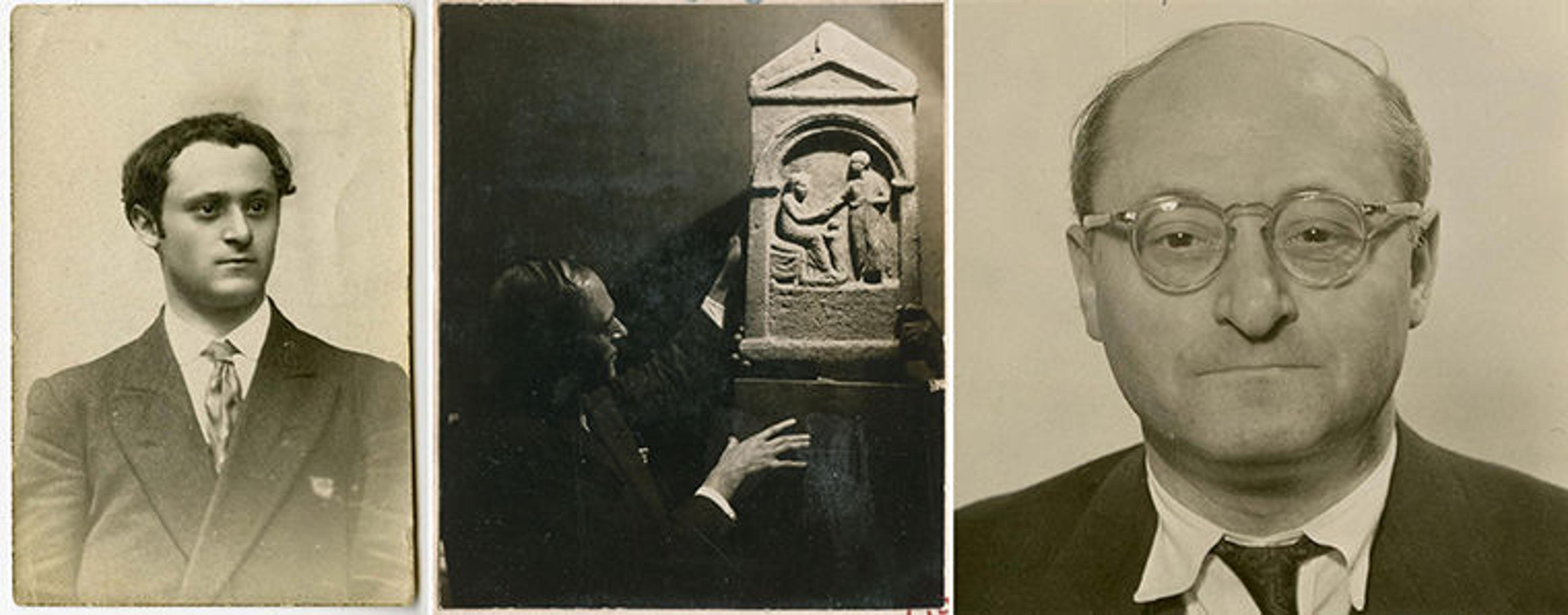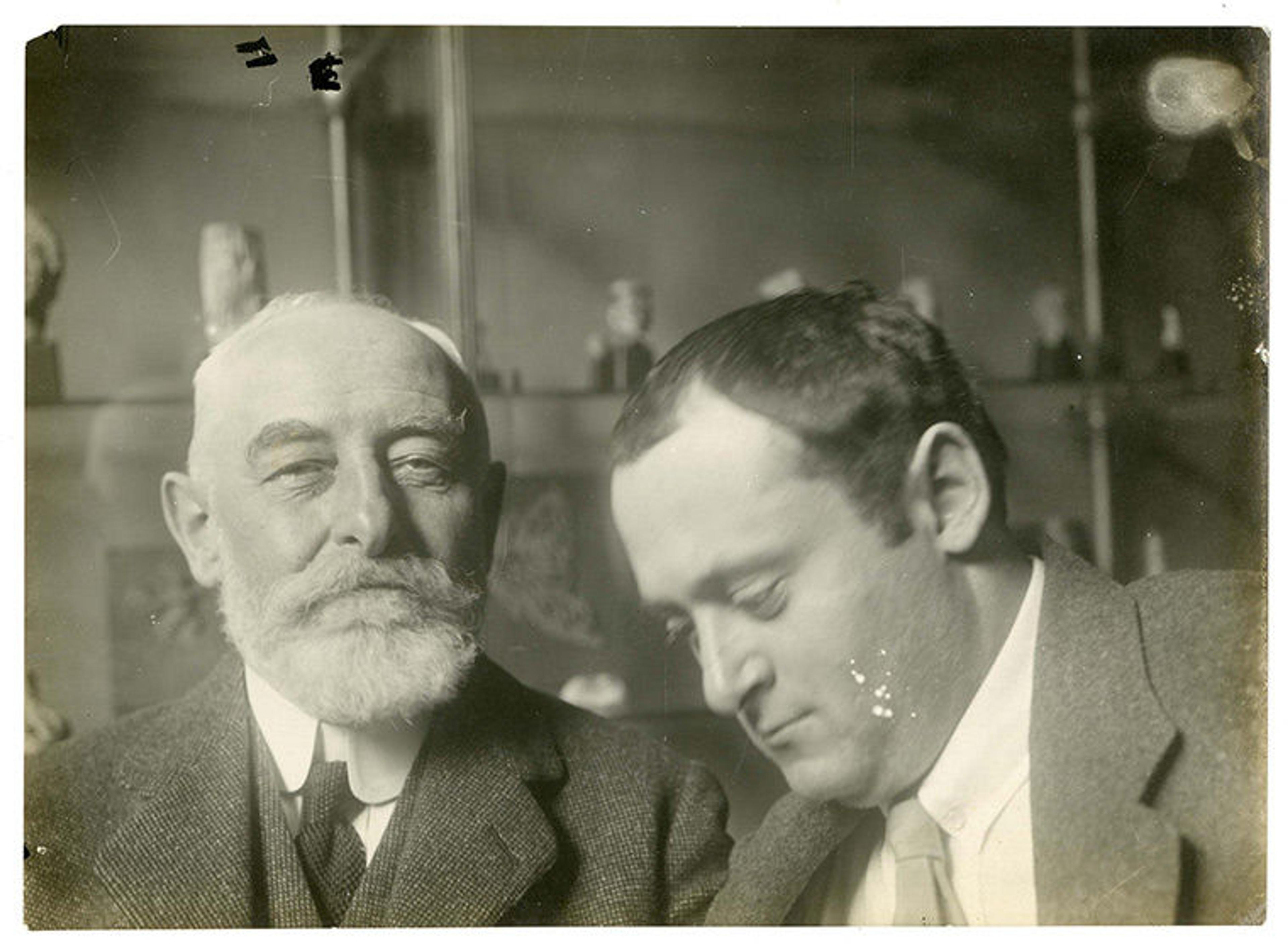
A young Joseph Brummer, right, with an unidentified older gentleman, ca. 1914. The Cloisters Library and Archives
Longtime readers of The Met's blogs may recall previous posts noting the work carried out over the years on the Brummer Gallery Records, held at The Cloisters Library and Archives. Acquired by The Met in 1980 and available online through Watson's Digital Collections since 2013, the Brummer records have become one of the Museum's most used archival collections.
The Brummer galleries were established in Paris sometime around 1906 by Joseph Brummer (1883–1947). Shortly after, his younger brothers Imre (1889–1928) and Ernest (1891–1964), who had followed him to France from their hometown of Szeged, then in the Austro-Hungarian Empire, joined the business.
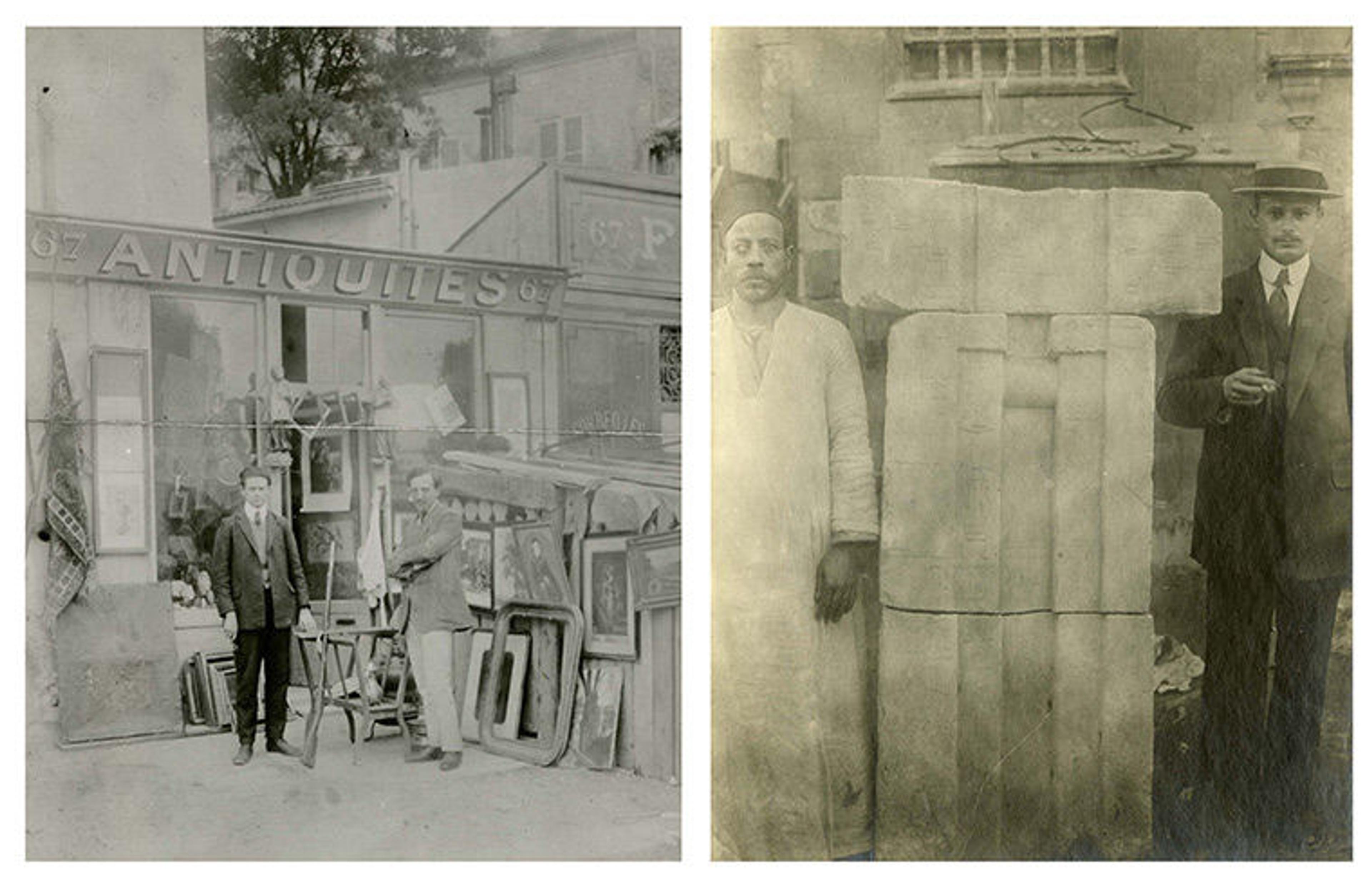
Left: Imre Brummer, in the dark suit, with the art dealer Joseph Altounian at 67 Boulevard Raspail in Paris, the location of the first Brummer gallery. Right: Imre with a colleague in Egypt, ca. 1913. The Cloisters Library and Archives
By 1914, the gallery was successful enough that the two elder Brummers were able to immigrate to America and set up shop in New York, while Ernest remained active in Paris. After serving in the French army during World War I, Ernest continued art dealing—sometimes independently, sometimes in consort with his brothers—until being forced to join Joseph in New York just ahead of the Nazi invasion of France.
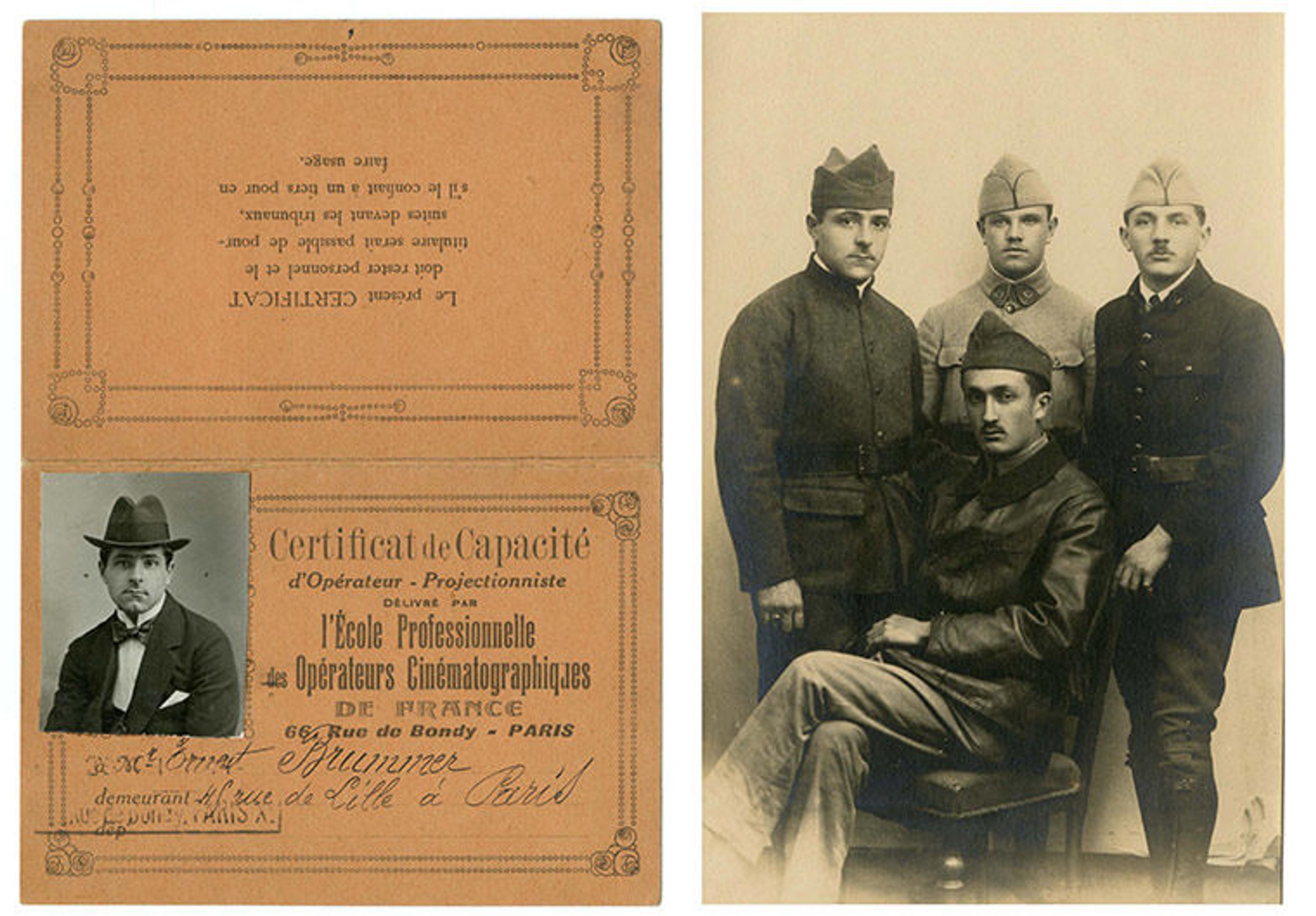
Left: Ernest Brummer's 1914 projectionist’s license. Right: Ernest Brummer, standing to the left, with fellow WWI soldiers. The Cloisters Library and Archives
Spanning the hundred years from the end of the nineteenth century to the close of the twentieth, the photographs, correspondence, ledgers, and other documents that constitute the Brummer Gallery Records provide an invaluable insight into these important dealers. Their scope ran from the ancient Babylonian, Greco-Roman, Egyptian, and Mesoamerican worlds all the way through the Gothic age and Renaissance in Europe to the European avant-garde. (Joseph Brummer was not only one of the first dealers to have an appreciation for African art, but was also among the earliest supporters of contemporary artists as Henri Rousseau and Constantin Brancusi. In his early years in Paris, he had studied drawing under Henri Matisse and worked in the atelier of Auguste Rodin.)
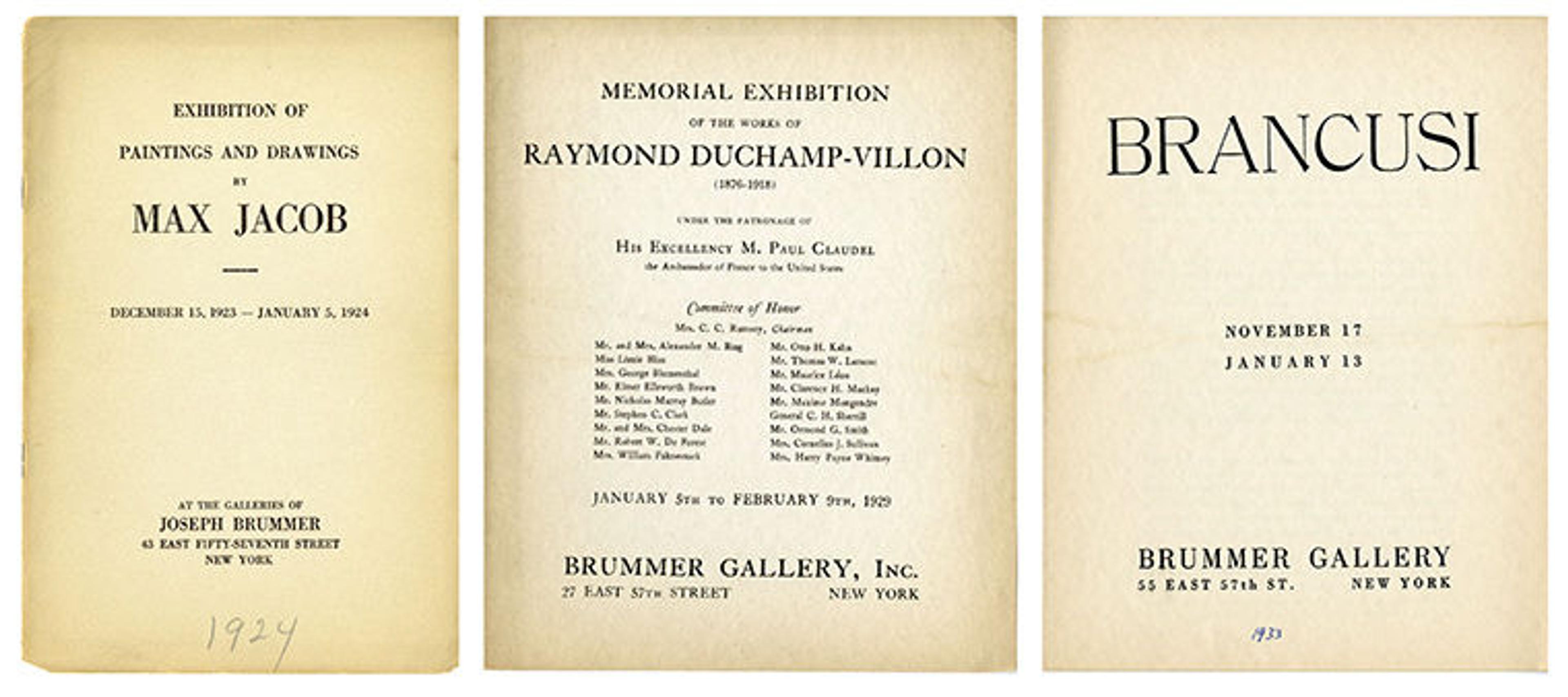
Brochures for exhibitions of modern art held at the Brummer Gallery, New York. The Cloisters Library and Archives
Originally acquired through Ella Baché Brummer, widow of Ernest, the Brummer archives are especially helpful for provenance research of the impressive artworks bought and sold by the galleries. At the heart of the collection are over fourteen thousand accession cards that dutifully record the sellers, buyers, sales prices, and other key data related to objects that passed through the New York office (roughly half of which were acquired through the Paris operation). The importance of the art recorded and the depth of information in the materials inspired us to digitize the collection and, in 2012, we were honored with a grant from the Kress Foundation to carry out this work. Since that time, almost nine thousand individuals from around the world have viewed the online Brummer Gallery Records, generating more than 380,000 pageviews.
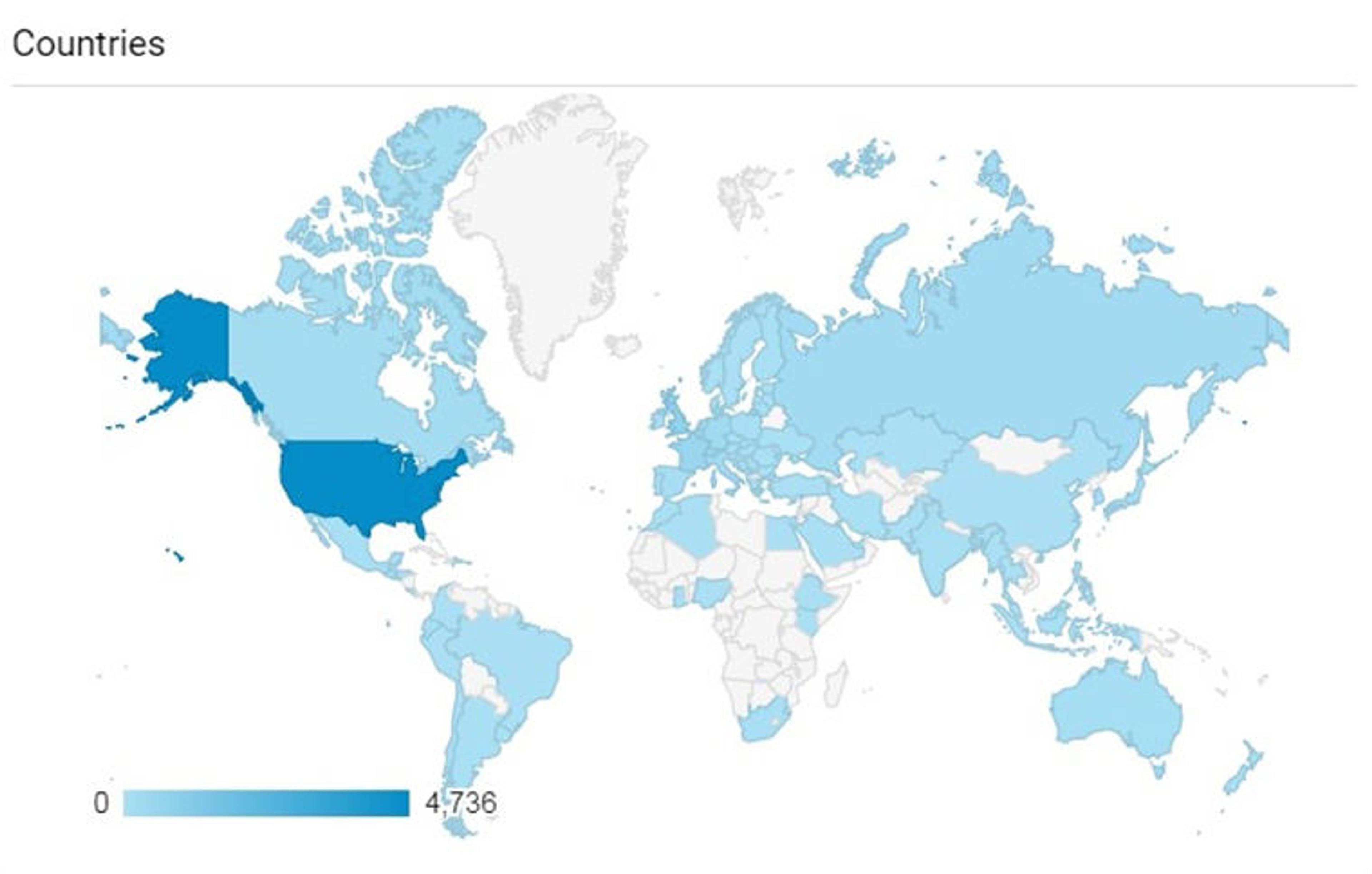
Map showing countries with users of the Brummer Gallery Records digital collection. Courtesy Google Analytics
We are now very pleased to announce that in 2016, The Met was gifted an additional nine linear feet of Brummer archival material through the generosity of Dr. John Laszlo, the nephew of Ella Baché Brummer, and his wife Pat.
Featuring travel diaries, personal essays, exhibition brochures, numerous gallery and personal photographs, and over seven hundred additional object cards, the Laszlo collection expands our understanding not only of the Brummers' business activities, but their personal and family lives as well. For instance, through the correspondence, we can now form a clearer picture of their relationships with important clients (including The Met and other museums). More deeply, we also gain a deeper appreciation of Joseph and Ernest's efforts following World War II to locate their elder sister Etelka, who had remained in Szeged and—with much of the Jewish population there—perished in the Holocaust. New photographs are especially enlightening. Previously, there were very few images available of Joseph Brummer, either in our archives or in publication. But thanks to this gift, we can now enjoy a much fuller picture of the man, from his years as an art student to shortly before his death.
As soon as we received the Laszlo collection, we began its digitization, and this process has just been completed. The physical materials are mostly housed in a separate series within the Brummer Archives, but digitally, we have incorporated the 1980 and 2016 donations to allow online researchers to browse the full database seamlessly. For instance, the database provides quick links to all of the personal and gallery photographs, and the new object cards have been placed in sequence with the older ones.
If, however, longtime users of the Brummer digital collection would like to limit their results to just the new material, they can simply add the term "Laszlo" to any search to restrict it. The updated finding aid for the full Brummer archives can be found here.
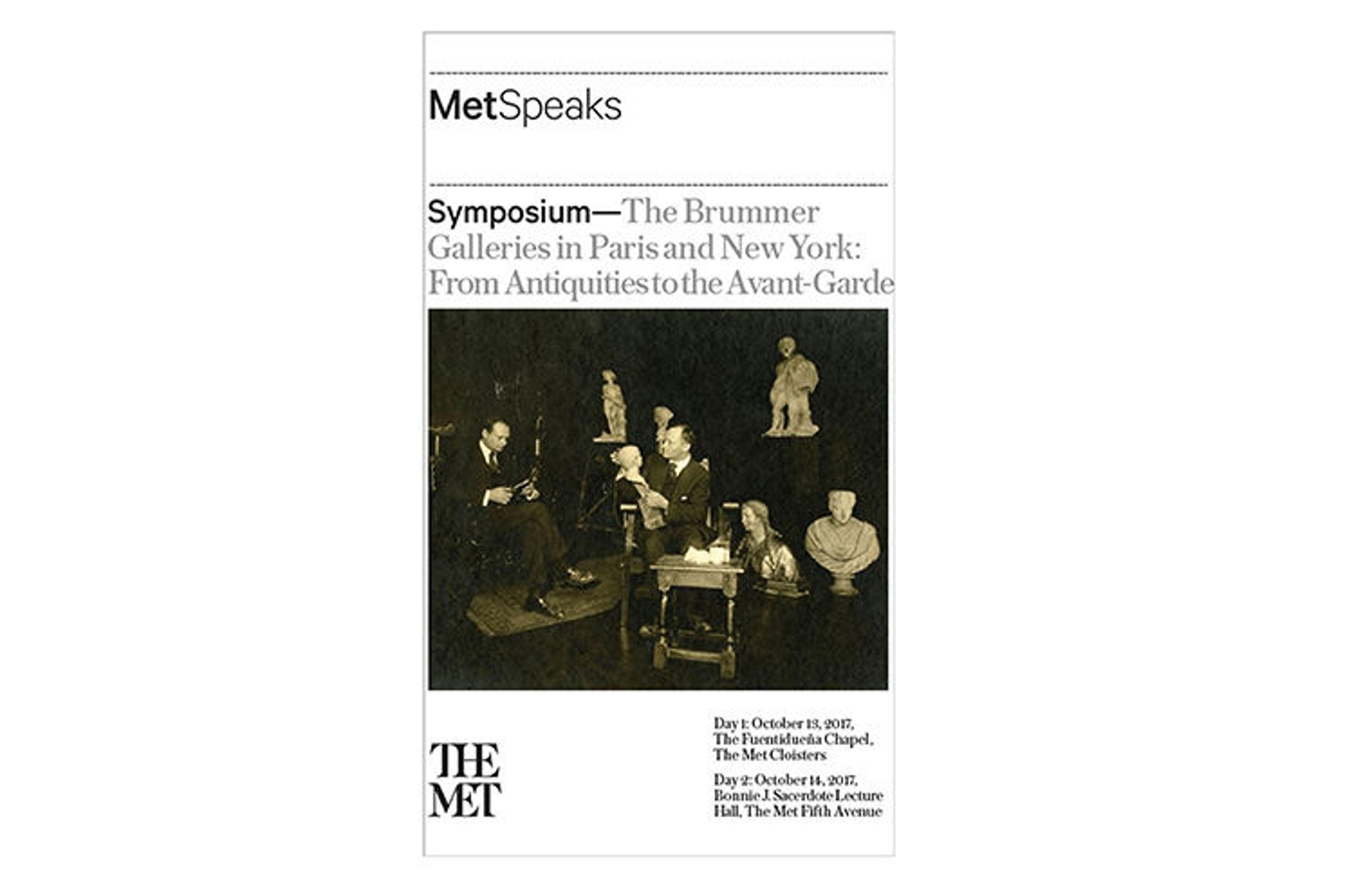
Announcement for the Brummer symposium
The Met houses not only the Brummer archives, but also the largest collection of Brummer-provenanced objects, with over six hundred artworks that were acquired either directly from the galleries or, later, from the Brummers' many clients. So it seemed fitting that this last year, to mark both the acquisition of the Laszlo archives and the seventieth anniversary of the passing of Joseph Brummer, The Met hosted a symposium on the brothers and their businesses. Organized by those of us at the Museum who have been working with and studying Brummer materials for the last decade or more, the two days of talks featured sixteen speakers—representing eight curatorial departments as well as outside scholars—held at The Met Cloisters on October 13, 2017, and at The Met Fifth Avenue the following day. We were honored to have Dr. John Laszlo as keynote speaker along with William D. Wixom, former chairman of the Department of Medieval Art and The Cloisters, and Curator Emeritus Charles T. Little to provide their recollections of Ernest and Ella Brummer. And we were especially thrilled to have in attendance Richard Brummer, son of Imre Brummer, whose own fascinating career in film and sound engineering was a revelation. (Videos of the symposium talks can be viewed here).
The story of the Brummer galleries, their founders, and their extended families makes for a fascinating insight into both the international art market and some of the most pivotal moments of the twentieth century. We are pleased to be able to provide onsite and remote researchers alike with access to their archives, which, thanks to John and Pat Laszlo, are now richer than ever.
